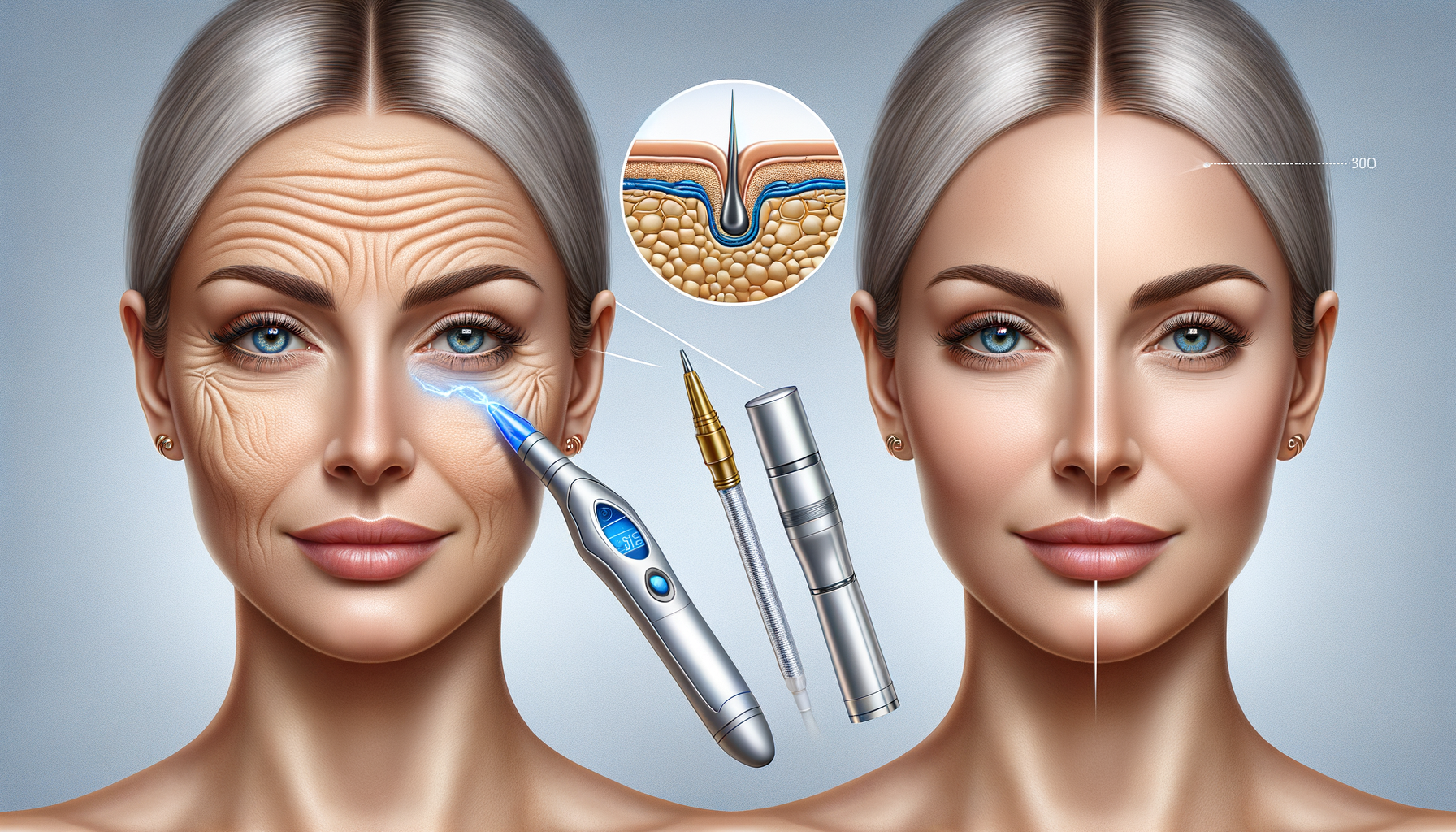How Fibroblast Treatment Works On Forehead Wrinkles
Fibroblast treatment, also known as plasma skin resurfacing, is an innovative technique designed to address signs of aging such as forehead wrinkles. This non-surgical procedure utilizes a plasma pen to deliver controlled micro-traumas to the skin’s surface. The plasma energy stimulates fibroblasts, which are the collagen and protein-producing cells in the dermis layer. By activating these cells, the treatment encourages the natural production of collagen, elastin, and hyaluronic acid, all of which are essential for maintaining skin elasticity and firmness.
Unlike traditional surgical methods, fibroblast treatment does not involve cutting or removing skin. Instead, it relies on the body’s natural healing processes to rejuvenate and tighten the skin. This makes it an appealing option for those looking for a less invasive method to combat forehead wrinkles. The results are gradual, with improvements becoming more noticeable over several weeks as new collagen forms.
Key benefits of fibroblast treatment include:
- Minimal downtime compared to surgical procedures.
- Reduced risk of scarring and infection.
- Natural-looking results that enhance the skin’s texture.
What To Expect During Fibroblast Forehead Procedure
Before undergoing a fibroblast treatment for forehead wrinkles, it’s essential to understand the procedure’s steps and what to expect during the session. Initially, a consultation with a certified professional is necessary to assess your skin type and determine if you are a suitable candidate for the treatment.
On the day of the procedure, the practitioner will begin by cleansing the forehead area and applying a topical anesthetic to minimize discomfort. Once the skin is numbed, the plasma pen is used to create small, controlled dots on the skin’s surface. These dots are strategically placed to target areas with wrinkles and sagging skin.
During the treatment, you may feel a slight tingling or warmth as the plasma pen works its magic. The entire process typically takes between 30 to 60 minutes, depending on the extent of the treatment area. After the procedure, you’ll notice small crusts forming at the site of the dots, which is a normal part of the healing process.
It’s important to follow any aftercare instructions provided by your practitioner to ensure optimal results and minimize any potential side effects.
Recovery Tips After Fibroblast Plasma Treatment
Post-treatment care is crucial for a successful recovery and achieving the desired results from your fibroblast treatment. Here are some essential tips to help you through the healing process:
- Avoid touching or picking at the crusts that form on your skin, as this can lead to scarring or infection.
- Keep the treated area clean and dry, and follow any cleansing routines recommended by your practitioner.
- Apply any prescribed ointments or creams to aid in healing and reduce discomfort.
- Protect your skin from sun exposure by wearing a broad-spectrum sunscreen and avoiding direct sunlight.
- Stay hydrated and maintain a healthy diet to support your skin’s natural healing processes.
Most individuals can return to their regular activities within a few days, but it’s essential to avoid strenuous exercise and activities that may cause excessive sweating until the skin has fully healed. Full recovery typically occurs within 7 to 10 days, with continued improvement in skin texture and appearance over the following weeks.
Comparing Fibroblast Treatment to Other Anti-Aging Solutions
When considering solutions for forehead wrinkles, it’s helpful to compare fibroblast treatment with other available options. Traditional methods like surgical facelifts and injectable fillers each have their advantages and limitations.
Surgical facelifts provide dramatic and long-lasting results but come with higher risks, longer recovery times, and greater costs. Injectable fillers offer immediate results with minimal downtime, but they require regular maintenance and may not address the underlying causes of aging as effectively.
Fibroblast treatment stands out as a middle ground, offering a non-invasive approach with natural-looking results and minimal downtime. It stimulates the body’s own collagen production, providing a gradual improvement in skin texture and firmness. For individuals seeking a balance between effectiveness and invasiveness, fibroblast treatment is a compelling choice.
Conclusion: Is Fibroblast Treatment Right for You?
Deciding whether fibroblast treatment is suitable for you depends on your individual skin concerns, goals, and medical history. It’s important to consult with a qualified professional who can evaluate your skin and provide personalized advice.
For those looking for a non-surgical option to reduce forehead wrinkles and achieve a rejuvenated appearance, fibroblast treatment offers a promising solution. With its ability to stimulate natural collagen production and deliver gradual, natural-looking results, it is becoming an increasingly popular choice among individuals seeking to enhance their skin’s youthful glow.
Ultimately, the decision should be made based on a thorough understanding of the procedure, realistic expectations, and a commitment to following post-treatment care instructions for the best possible outcome.




Leave a Reply